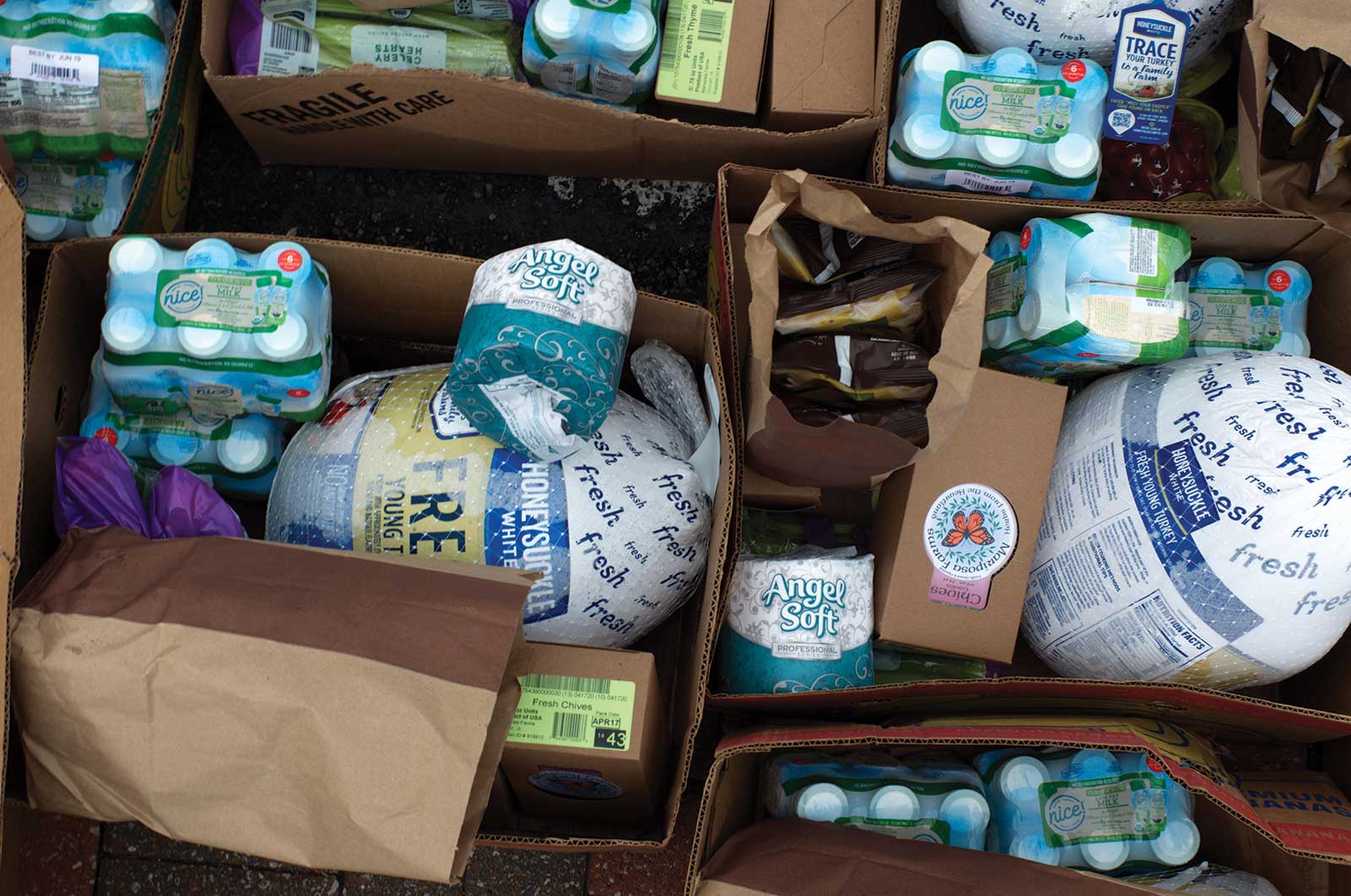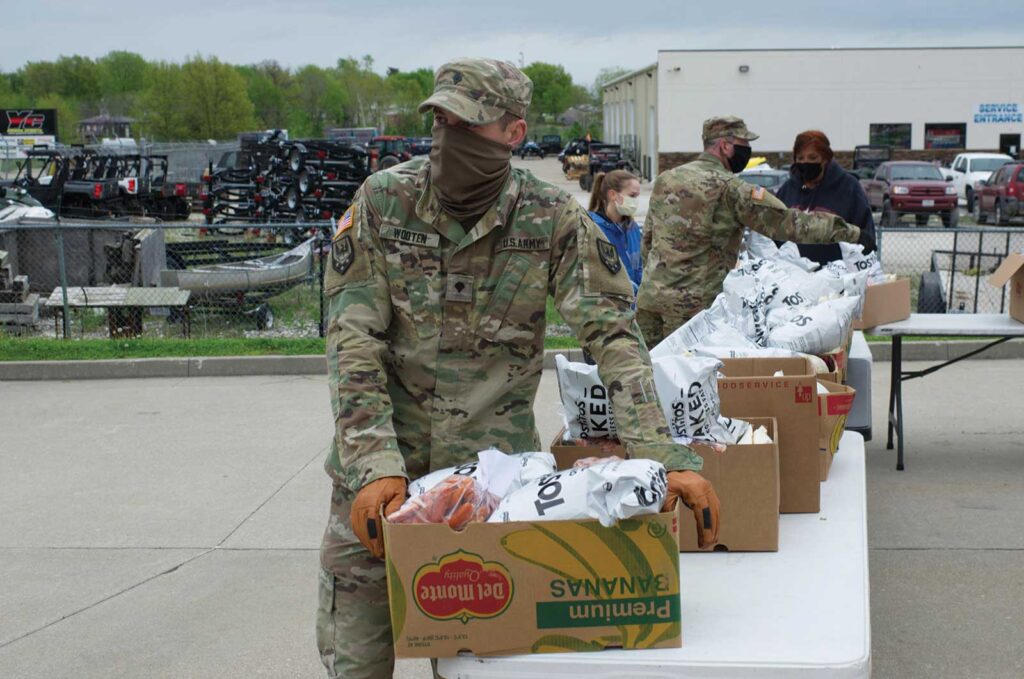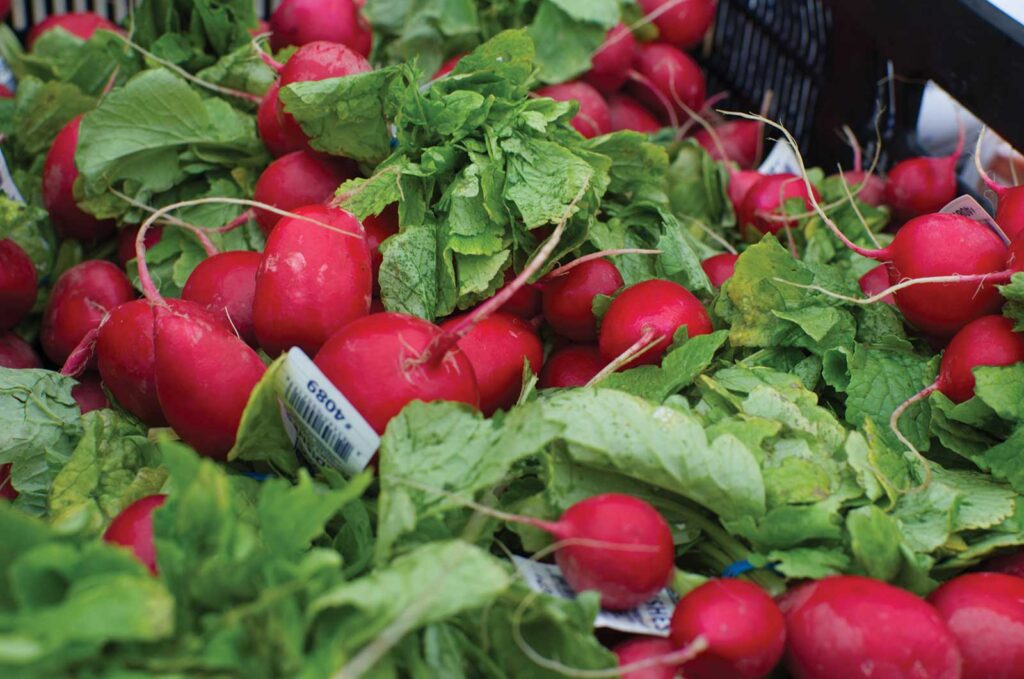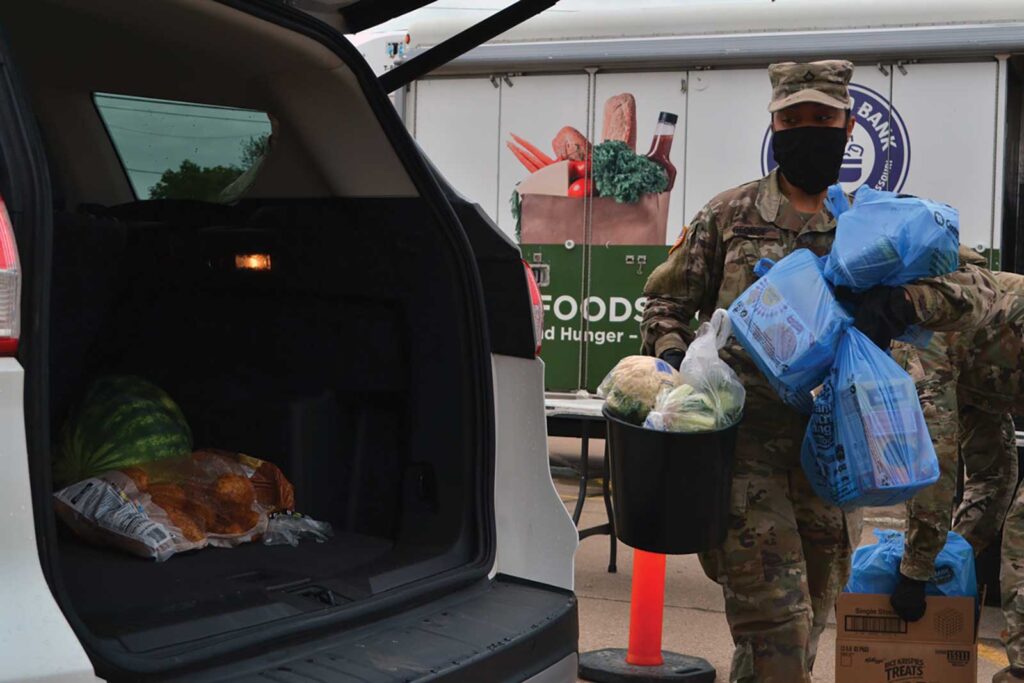Sharing Food and Hope

The Food Bank for Central & Northeast Missouri continues to provide food and services to those who need it most.
Imagine your own monthly budget. You probably have expenses for fixed costs like mortgage payments or rent, child care, and utilities. These costs don’t change, meaning that you have to cut back on another area of your budget when you meet a financial challenge. For many people, food spending is the first thing to go when the going gets tough.
“One of the misconceptions is that there is one type of person who experiences food insecurity and may need access to our services,” says Lindsay Young Lopez, president and CEO of the Food Bank for Central & Northeast Missouri. “There is no one person or type of person who makes up our demographic.”
Since 1981, the Food Bank has been providing food and, with it, hope to our community in Boone County and beyond. The Food Bank is a regional disaster and hunger relief network that acquires and distributes millions of pounds of food annually to partner agencies across a 32-county area.
“We are so much larger than people here in the local community may believe,” Lindsay says. “Boone County is our most populous area, but we also take food into very rural communities in a third of the state of Missouri. That’s a large footprint.”
Helping Put the Next Meal on the Table
As a member of Feeding America, the nation’s largest hunger-relief organization, the Food Bank works with 140 food pantries, soup kitchens, shelters, and other agencies to ensure food gets to those who need it most. Because of these partnerships, the Food Bank can turn every dollar into $21 worth of groceries.
“We are the wholesaler, and [partners] are the resaler,” Lindsay says.
Feeding America has six food banks in the state of Missouri. The Food Bank for Central & Northeast Missouri has the largest territory in the state and is also the only food bank in the state that provides food at no cost to recipients.
In addition to coordinating food distribution, the Food Bank operates the Central Pantry, located on Big Bear Boulevard in Columbia, where those in need can shop for food in a grocery store setting. One of the largest pantries in the state, Central Pantry typically feeds 10,000 people a month.
With its mobile pantries, the Food Bank is able to reach even more people, bringing non-perishable foods, produce, and meat to low-income communities that don’t have an actual food pantry. Other programs reach across age groups, such as the Buddy Packs program, which brings nutritious food to elementary school children; the VIP Veteran Pack program, which distributes food and toiletries to veterans; and Senior Boxes, which are delivered to senior citizens, the fastest-growing demographic that the Food Bank serves.
All of the Food Bank’s programs are designed to reach those in our community who need assistance, whether they just need one-time help or ongoing service. “Any one of us could find ourselves in the situation where we are the person that needs that assistance,” Lindsay says. “We are all just one tragic event — a divorce, a job loss, an illness — away from that situation where you need assistance. We hear frequently that this made such a tremendous difference that they were able to free up resources to pay for other things.”
The Food Bank’s goal is to get those it serves to a point where they don’t need its services anymore. “If you take away the worry of where somebody’s going to get assistance to put their next meal on the table, then maybe we’re helping them in other ways, like paying their utility bill or rent. We take away some of their everyday concerns,” says Heather Hargrove, board chair of the Food Bank.
“We’re here to help anybody,” Heather says. “You’d be surprised who needs help sometimes. These are the people who live side-by-side with us, and we can help them across all ages.”
Adapting During the Pandemic
Food banks were originally built on a model focused on shelf-stable items, Lindsay says, such as those non-perishable foods that might not always have the best nutritional value. During her tenure at the Food Bank, she’s focused on providing “foods to encourage” — healthier items that include more produce, dairy, and whole grains. Now, more than 60% of the food provided on an annual basis is considered “food to encourage,” although Lindsay says it’s more challenging and expensive to procure.
The normal challenges associated with running the Food Bank have been exacerbated by the COVID-19 pandemic. “We are a large, complex organization in normal times, and obviously the pandemic is anything but normal,” says Lindsay. “We’ve had to literally alter everything we’ve had to do across our organization. We’ve had to be adaptable and look to creative approaches and solutions.”
Central Pantry, for example, shifted to a drive-thru only during the first wave of the pandemic. Throughout the past nine months, Central Pantry has seen an uptick in those it serves, reaching a high of 12,500 in October. Many of those people are visiting a pantry for the first time, and the Food Bank encourages anyone who may find themselves in need to reach out by visiting their website or calling. “We have compassionate people who want to help,” Lindsay says. “Don’t be afraid to reach out.”
The Food Bank also relies heavily on its volunteer program, which was suspended during the pandemic. The Missouri National Guard came to help out on-site, both at the volunteer room and Central Pantry. Volunteers are just starting to phase back in, albeit in smaller numbers with the appropriate safety precautions.
“We have to keep looking for the silver lining in all of this,” says Lindsay. “More than 100,000 people rely on us to provide food to them in some capacity, and we can’t let them down. We’re considered frontline workers. Our team is committed to our mission, and they have adapted and risen to the occasion in a way that is nothing short of remarkable.”
Despite the challenges, the Food Bank is still working to feed people in need, as it has for 40 years. “We are incredibly grateful to everyone who has helped us during the pandemic,” says Lindsay.
“Our community has been so generous,” adds Heather. “It grabs my heart to see how generous this community is for those who are in need during this time.”
The Food Bank for Central & Northeast Missouri
2101 Vandiver Dr.
573-474-1020
sharefoodbringhope.org
Mission Statement: Through empowerment, education, and partnerships, The Food Bank for Central & Northeast Missouri brings together community resources to feed people in need.
Founded: 1981
Board Members:
Heather Hargrove, Chair
Amy Schneider, Vice Chair
Kelley Frink, Treasurer
Jennifer Hedrick, Treasurer
Michael Kateman, Past Chair
Judy Starr
Wilson Beckett
David Coil
Andre Cook
Gina Gervino
Danny Hammack
Claudia Kehoe
George Kennedy
Scott Maledy
Marty McCormick
David Nivens
Jennifer Peck
Joe Priesmeyer
Janice Serpico
Steve Sowers
Tim Vicente
Todd Weyler
Mary Winter






